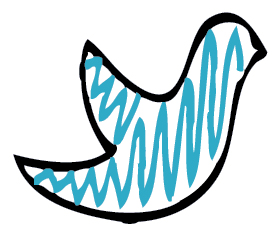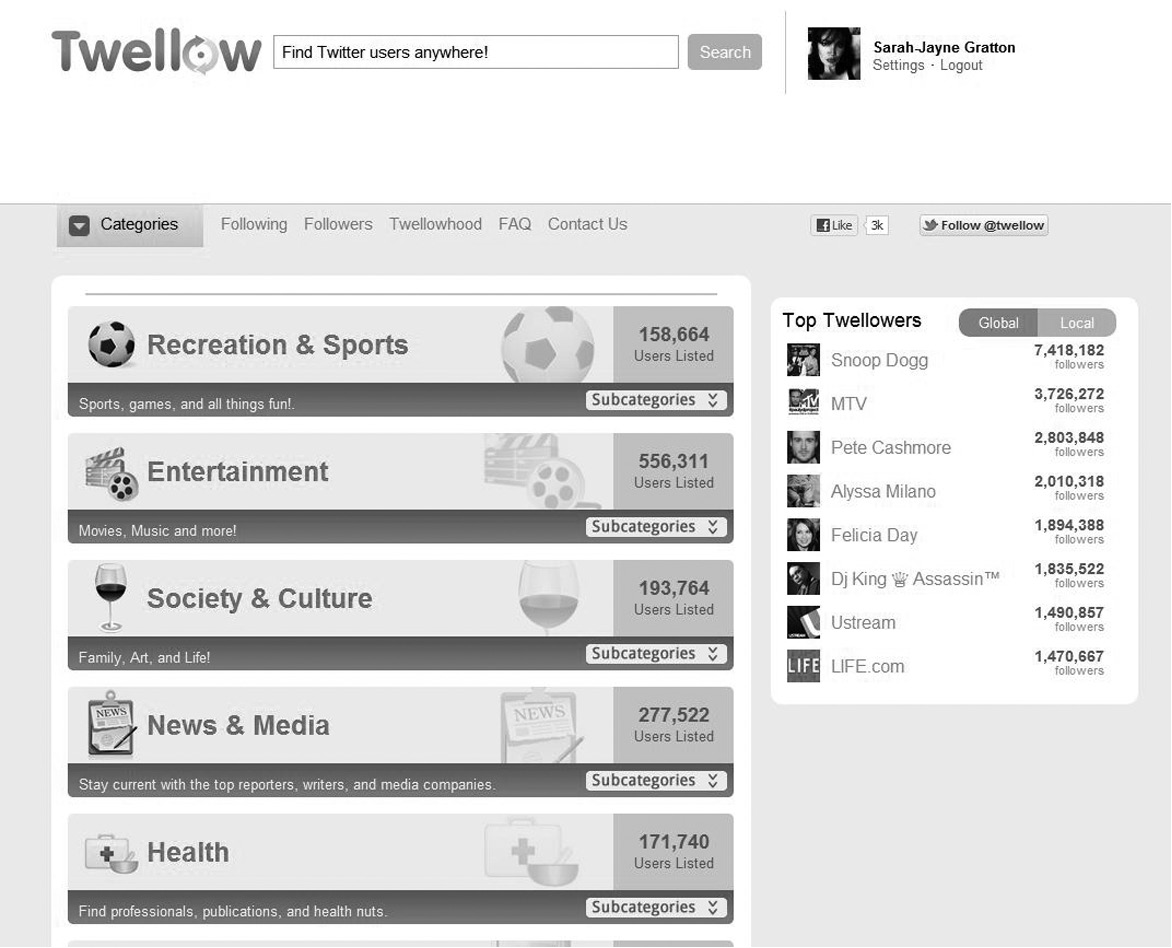Chapter 6
Building Your Followers: Quality Versus Quantity
“What are you? Your name, your quality? And why did you answer this present summons?”
King Lear

When building your following, it’s hard not to let a little thing like numbers get in the way of your decision-making. Everyone wants to be the most popular person in the playground, and Twitter is just another such playground.

But here’s where we need to put our professional heads on and consider what we want to actually gain from the platform in terms of potential revenue. Yes, I’ve said it before and I’m saying it again: I firmly believe that it is possible to make money as a result of the connections and relationships built via Twitter. The quality-versus-quantity conundrum is the issue that surrounds its probability.
I’m Listening! Or Am I?
Numbers alone don’t equate to followers in the true sense of the word and, as I’ve explained, emotions govern our decision-making processes. There are thousands of bots that follow you indiscriminately on Twitter without the least bit of interest in you or your brand, Although this increased following might initially be a great ego booster, it’s a hollow victory in terms of your brand message having any real impact.
Imagine you’re the host of a show on your favorite radio station. Every day you go on air with lively, witty, and challenging content. Your show features promotional content that you want your listeners to emotionally connect with and, over time, invest in. So you need to ensure that your listeners are actually listening. Your listening figures are tremendous and you experience that flush of power-driven delight that comes from the knowledge that your show is hugely popular and influential. But, on closer inspection of the listening figures, you learn that only 10 percent of your listeners actually listen to your show each day and that, out of those 10 percent, only 2 percent call in or invest in your promotions. The others may have tuned into your channel, but they are neither listening nor responding.
The autofollow bots on Twitter are a lot like these superfluous listeners. They look out for keywords and follow without the least bit of interest in your brand, other than to latch onto it as a sounding board for the automated spam tweets and messages that do nothing to boost your Twitter appeal or the content of your stream. The bots are there for one purpose and one purpose only: to launch a full-scale attack with a barrage of spam polluted links.
But how do you find them and, more important, what can you do about them?
How to Become a Botinator
I’ve developed my own anti-bot checklist to keep my Twitter timeline free from Twitter spammers and the dreaded bots. I like to think of myself as a kind of bot Terminator — or Botinator — and here’s my strategy for being one:
1. They’ll be back!
First, I always wait a few days before following back, which gives me an opportunity to manually vet any new followers before making a decision.
It also gives me a chance to see whether they are using one of the most common tricks of automated Twitter bots, which is to follow someone purely to see if they follow back. This is fine in itself, but the difference between real people and software is that bots put you on a timer and unfollow you after a certain period of time, only to follow you again a few days later to send you another junk tweet.
If you still don’t follow back, the automated software will continue until you either follow back or block the user. Waiting a few days before you check out someone’s profile gives you the opportunity to peruse their Twitter stream before committing to follow. If you see a stream of junk or spam-related links with no other interaction (see Figure 6-1) or a chain of follow and unfollow behavior, it’s most likely the work of a bot and is best ignored.
Figure 6-1
A stream of junk or spam tweets with no other interaction is a clear indication of a bot follower.

2. Same script, different cast
Look for the giveaway scenario, where thoughts of déjà vu appear and you realize that you’ve read this tweet somewhere before. Bots like to take different Twitter handles to push out the same content time and time again, as shown in Figure 6-2. Make a note of the tweets you believe are particularly suspicious and look for recurrences from new followers. Also bear in mind that many genuine Twitter followers have their accounts hijacked by bots on a regular basis. This hijacking occurs when they subscribe to a Twitter service or third-party application, where Twitter account information needs to be entered. Always ensure that you sign up to only those applications you know are safe.
Figure 6-2
Bots like to use different Twitter handles to post the same spam messages.

3. Invasion of the profile pic snatchers
Remember that they clone! Spammers and bots like to use the same profile picture for hundreds of accounts, which are often (and I say this without any sexism intended) images of scantily clad, attractive young women (see Figure 6-3).
I’ve been followed by multiple bots using the same profile photo dozens of times on the same day and for some reason they think I won’t notice. If you spot a profile picture that looks familiar, you’ve more than likely seen it before — and it’s probably a bot!
Figure 6-3
Bots often sign up to several Twitter accounts using the same profile picture.

4. Can I compare thee to a summer’s bot?
I’m a great lover of quotes, especially the ones that motivate and inspire. I enjoy tweeting the ones that really grab my attention, as do many of my followers. However, this gem of knowledge hasn’t escaped the bots’ attention and the quote/link strategy is one that many bots choose to adopt to provide the look of an authentic Twitter profile.
So how do you sort the wheat from the chaff? The answer lies in the addition of those affiliate and sales page links they attach to the quotes they tweet (see Figure 6-4). So, if you see a profile with an overabundance of quotes, take a closer look. If these kinds of links are continually attached, they’re likely to be the work of a bot, using the charm offensive as link bait.
Figure 6-4
Bots often use quotes to attract followers to click on their affiliate and sales page links.

TrueTwit Validation
TrueTwit markets itself as the validation service for Twitter. It was created to help its users sift through their followers, letting them separate the humans from the bots.
That’s all well and good, but it turns out that TrueTwit is a double-edged sword. It works by sending your new followers an automated direct message (DM) asking them to validate whether they are a bot or spammer by completing a CAPTCHA (Completely Automated Public Turing Test to Tell Computers and Humans Apart). The validation involves asking them to complete a simple test (see Figure 6-5) that is easy for a human but difficult for a computer, such as entering numbers and letters displayed as distorted graphics. If TrueTwit receives a correct answer to the CAPTCHA, it is assumed to have been entered by a person and is validated.
Figure 6-5
TrueTwit validation asks you to complete a CAPTCHA to prove you’re neither a spammer nor a bot.

But just because someone is able to pass the CAPTCHA validation test doesn’t mean he or she isn’t a spammer. Passing the test merely indicates a real person rather than a bot, but he or she may still be posting “click here” links all day long, which makes the person no better than a bot in what he or she adds to your Twitter stream.
Another problem is the TrueTwit validation itself. If some of your followers also follow many people, it can be difficult for them to keep up with all the DM requests asking for validation. Failure to respond may, of course, mean the account is a bot, but it could also mean that the person receiving the DM is too overwhelmed to deal with the request or that he or she just didn’t see the message.
Many people see the TrueTwit validation process as an inconvenience and often choose to ignore the requests, so bear in mind that you could be losing valuable and loyal followers by subscribing to the application (see Figure 6-6).
In fact, the only way to avoid receiving a TrueTwit validation request via DM is to register with TrueTwit, which can almost come across as a threatening “sign up with us or else” message, again defeating the intention of the service to help clean up Twitter.
Figure 6-6
Not everyone likes using TrueTwit, and it can actually be detrimental to attracting quality followers.

The Perfect Balance
It’s easy to quip that quality is always better than quantity, but quality by itself doesn’t mean much on Twitter unless it comes in bulk. So why look at quality versus quantity at all? Why not instead focus on quality plus quantity? After all, you ultimately need to achieve both to get the most out of Twitter for your personal brand.
There’s a method of balancing the quality and the quantity of your followers and your tweets on Twitter that I’ve perfected over the years and want to share with you now:
1. Find your Twitter birds of a feather
Seek out people who are using Twitter for the same reasons you are using it. For example, if you’re a designer, photographer, writer, or musician, then follow those people with the same interests as yours, like other musicians, writers, and so on. That’s quality.
You can use the @Connect feature on Twitter to search for like-minded people. You also can use one or more of the many Twitter directories, such as Twellow (see Figure 6-7), Just Tweet It, and TweetFind. This exercise will not only help gain more followers (that’s quantity), but it will also provide you with followers more willing to converse, retweet, and share your tweets with others due to your shared common interests (that’s quality again).
Figure 6-7
Twellow is the Twitter equivalent of the Yellow Pages. It’s free to register your account and is a useful base to find followers with the same interests as you.

2. Base your following strategy on the SITE formula
I introduced the four types of tweets (Share, Inform, Thank, and Exchange) via the SITE formula in Chapter 5, and here’s where the tweets become even more useful. Not only does this method of tweeting make your brand stand out, it’s also an incredibly useful gauge for measuring the quality of other potential followers. Take a look at the Twitter streams of any new followers and see whether they are using the four types of tweet or whether they are just blanket posting with no real purpose or interest in others. This exercise will provide you with an immediate impression of their value.
3. Host a tweetup
A tweetup is a small, casual event where you invite your Twitter followers to get together on an informal basis, while sharing the event on Twitter. A tweetup helps you put a face to a name, building a stronger bond with that person. You will also gather other followers who are likely to bring their Twitter friends along to the tweetup.
Your tweetup can be as simple as asking your followers if they would like to meet for a drink or dinner. You can meet at a coffeehouse, bar, or even someone’s house. A tweetup also works if you are traveling and have a lot of followers in a particular area.
If you want to be more formal and attract more people, create a hashtag for the event and an invitation page. A service like Twtvite, shown in Figure 6-8, can help you set up your first tweetup quickly and easily.
Figure 6-8
Services like Twtvite can help you to easily organize a tweetup.

A Perfect Union for Your Personal Brand
By now the union between quality and quantity should be clear. The advice in this chapter will let you harness both attributes to ensure that your personal brand has a strong following that is truly worth its weight in gold.
The next two chapters reveal how to put together your ultimate Twittertorial calendar and how to translate it into your own 24-hour online brand show.

